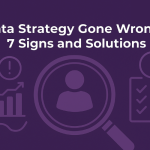Data sourcing is the low-hanging fruit for the sales and marketing sector. While PPC, SEO and blogging take time, gathering highest quality b2b data is no difficult feat. Most entrepreneurs or marketers often fail to acknowledge the two customer acquisition methods. The first involves creating a stellar digital presence through media coverage using PR and other tools. The other method is much simpler and comes with considerable risk.
What is Data Sourcing?
Data sourcing refers to the various approaches that vendors use for compiling leads. Note that several companies provide sales and marketing data. The test is to pick the best one of the lot. The end goal is to get high-quality data and Qualified B2B Leads and transform them into customers. What lies next are tips on how to approach sales data.
Getting the qualified B2B leads
Alternatively, you can create your internal mailing list through referrals and information gathered at events and seminars. Also known as self-compiled data.
Get started with Datagenie B2B prospecting platform
emails in 15 million companies.
Aspects of data sourcing to consider
Selecting a data provider
Some marketers type keywords and resort to the quick-fix of a Google search, and select the first option that comes up. Although SEO is a valuable system, things are different when it comes to data providers. Those seeking data sourcing through agencies and third parties must do their due diligence and look up the background thoroughly. When doing so, try to enquire into the data acquisition methods and whether the data is dated.
Many might not be aware, but data vendors typically fall under three categories of data sourcing for B2B busisness: compiled, crowd-sourced or self-reported. The data collection method strongly correlates with its accuracy.
Compiled Data
This method is an assortment of data collected over time, wherein the different data points are merged. The trouble with compiled data is that the information is, on average, about 18 months old by the time it features in the database. Let alone how old it is at the point of B2B Sales.
Crowd-sourced data
The method involves sourcing data from a crowd or group of people. Often, agencies offering the database run an incentive-based plan. In this method, users are encouraged into providing contact records. In return, they get ‘credits’ for downloading additional data, for instance. The primary drawback is that the data points get subjected to overlapping and conflicting information.
Self-reported data
In this, the contact or people publicly provide data about themselves. The data is accurate and up-to-date. Although precise, do not take the data for granted. Probe questions to the vendors about how often they gather such information. The method marks the fundamental aspect of sourcing fresh data pieces. The technique helps to ensure minimal errors, thereby increasing the chances of the campaign becoming a success.
Quality versus Quantity
Data Testing
Just like your investments, you should test your data. The vendors will likely provide a dataset to see the accuracy of their data and information. Now, it is crucial that you, from your end, vet the data to gauge where your potential ROI can go with the information provided. Also, do not forget to evaluate all the aspects of the contact details. Run sample campaigns, if need be. Doing so gives an idea of the open and response rates. Alternatively, you can try to use data from multiple providers as well.
One-time versus Recurring
It’s important that you consider whether you need the data for a short-term project or a long-term one. In the former case, once a campaign gets done, the list is put in a cycle and nurtured. The data then ultimately expires and is deemed unusable. According to HubSpot, contact-related datasets expire at a rate of 30 per cent per annum. Often, marketers end up repurchasing many of the same (and hence, expired) contacts.
A better approach is to opt for best lead generation service provider that provides data cleaning services. These make sure the dataset is updated regularly. Doing so renders an accurate data set. This aspect of data sourcing can save you hundreds and thousands of dollars from getting new datasets each time you choose to run a new campaign.
Also, look out for list suppression in your chosen recurring data provider. A suppression list consists of subscribers who have opted out from receiving your communications. In short, they serve as a do-not-contact list. There are auto-suppression lists as well!
Parting Words
In a nutshell, when seeking data sourcing avenues, keep a few items on your checklist. See that the database fits with your campaign objectives. Also, specify criteria, including location, industry and age. Next, inquire about their data collection method(s) and whether you can test the data. Note that the trustworthy and credible vendors offer the chance to test-run the data.
Talk to the Datagenie Expert Today
For those looking to grow their businesses through lead generation, Datagenie brings it all to the table. With 250 million touchpoints and 100 million contacts in 15 million companies the world over, there is no absolutely better place to start than right here! Plus, all the data is verified and validated in real-time, so you can always be sure of its accuracy.
Click here to get a free 10-day trial today.

Elizabeth Jones, Data expert at DataGenie, helps businesses turn data into clear, practical insights. She's great at simplifying complex ideas, making data useful and easy to understand. Elizabeth regularly shares tips on professional networks and actively joins discussions on X (formerly Twitter). Follow her posts on the DataGenie blog for straightforward advice on making data work better for your business.




